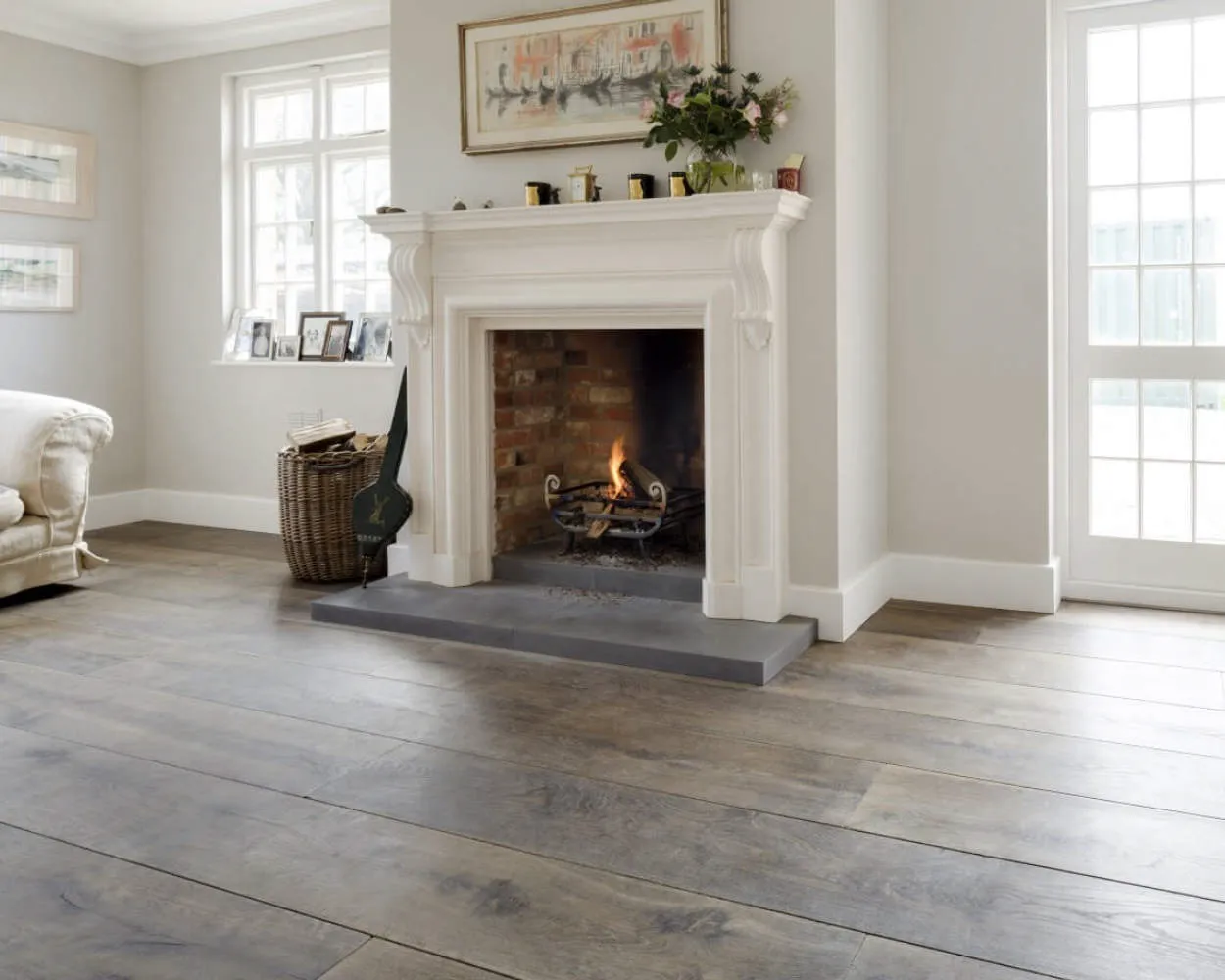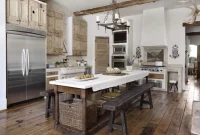The flooring in your living room sets the foundation for the overall style and ambiance of the space. Whether you prefer the warmth of hardwood, the elegance of tile, or the coziness of carpet, choosing the right flooring can truly transform your living room into a stylish and inviting sanctuary.
Flooring Material Options
The choice of flooring material can significantly impact the overall style and ambiance of your living room. With numerous options available, it’s essential to choose a flooring material that not only complements your design preferences but also suits your lifestyle and budget.
1. Hardwood: Hardwood floors offer timeless beauty and durability. They come in various species, finishes, and colors, allowing you to create a classic or contemporary look. However, they can be expensive and require regular maintenance to prevent scratches and moisture damage.
2. Laminate: Laminate flooring provides a cost-effective alternative to hardwood. It mimics the appearance of wood, stone, or tile, offering a wide range of design possibilities. It’s easy to install, durable, and resistant to stains and fading. However, it may not add as much value to your home as genuine wood flooring.
3. Vinyl: Vinyl flooring is highly versatile and suitable for any living room style. It’s available in various designs, including wood and tile looks, and offers excellent durability and moisture resistance. Vinyl is also relatively affordable and easy to maintain.
4. Carpet: Carpeting can add warmth, comfort, and a cozy feel to your living room. It comes in different textures, patterns, and colors, allowing you to customize the atmosphere. Carpets are particularly suitable for households with children or seniors as they provide a soft surface to walk on. However, they may require regular cleaning and can trap allergens.
5. Tile: Tile flooring offers a versatile and durable option for living rooms. It comes in various materials, such as ceramic, porcelain, and natural stone, allowing you to achieve different looks. Tiles are easy to clean, resistant to moisture and stains, and offer excellent longevity. However, they can be cold underfoot and may require professional installation.
Designing with Area Rugs
In the world of interior design, area rugs are a powerful tool for transforming the look and feel of a space. When it comes to the living room, choosing the right flooring is crucial as it sets the foundation for the overall style and ambiance. One increasingly popular option is to incorporate area rugs into the living room design.
Area rugs offer numerous benefits. They not only add warmth and comfort underfoot but also provide an opportunity to inject personality and style into the room. With a wide variety of textures, colors, patterns, and sizes available, area rugs can complement any design aesthetic, from contemporary to traditional.
When selecting an area rug for the living room, consider the size of the space and the furniture arrangement. A large rug can anchor the seating area and create a cohesive look, while a smaller rug can highlight specific areas, such as a reading nook or a coffee table. It’s essential to measure the room accurately and choose a rug size that fits the space harmoniously.
Additionally, the design and pattern of the rug should align with the overall style of the room. For a minimalistic and modern living room, a solid-colored or geometric patterned rug can create a sleek and clean look. On the other hand, a floral or oriental-inspired rug can add a touch of elegance and sophistication to a more traditional space.
Another aspect to consider is the material of the area rug. Different materials offer different benefits and maintenance requirements. For high-traffic living rooms, durable and stain-resistant materials like wool or nylon are ideal choices. Alternatively, natural fibers like jute or sisal can bring a relaxed and organic feel to the room.
Lastly, don’t be afraid to mix and match rugs in the living room. Layering rugs can add depth and dimension to the space. Try combining different textures or sizes to create a visually interesting arrangement. Just ensure that the rugs complement each other in terms of color and style.
In conclusion, area rugs are a versatile and stylish addition to any living room flooring. They offer both functional and aesthetic benefits, allowing you to create a space that reflects your personal style and enhances the overall design of the room.
Hardwood vs. Laminate
When it comes to choosing the perfect flooring for your living room, the decision often comes down to hardwood or laminate. Both options have their own set of advantages and considerations, making it important to weigh your options before making a final decision.
Hardwood:
- Timeless and elegant, hardwood flooring adds a touch of sophistication to any living room.
- Natural and warm, hardwood creates a cozy and inviting ambiance.
- Durable and long-lasting, hardwood can withstand heavy foot traffic and is less prone to scratches and dents with proper care.
- Although it requires regular maintenance to keep its beauty, hardwood can be refinished multiple times, extending its lifespan.
Laminate:
- Affordable and budget-friendly, laminate flooring provides a cost-effective alternative to hardwood.
- Easier to install, laminate is a great option for DIY enthusiasts and can be installed quickly without the need for professional help.
- Resistant to scratches and wear, laminate is more forgiving in high-traffic areas.
- Due to its synthetic composition, laminate is less susceptible to moisture damage compared to hardwood.
Considerations:
- Lifestyle and personal preference play a key role in choosing between hardwood and laminate.
- Budget constraints may steer you towards laminate, while a desire for authenticity and long-term value may lead you to invest in hardwood.
- Environmental impact is another crucial factor to consider, as hardwood comes from natural sources while laminate is made from synthetic materials.
In Conclusion:
Ultimately, the choice between hardwood and laminate flooring for your living room comes down to your individual needs and style preferences. Consider factors such as budget, durability, maintenance, and aesthetics to make the best decision that complements your space and lifestyle.
Floor Color and Texture
The selection of floor color and texture plays a crucial role in creating a stylish living room. As the foundation of the entire space, the flooring sets the tone for the overall atmosphere and aesthetic appeal. Here are some key considerations when choosing the perfect floor color and texture for your living room:
1. Light vs. Dark
The color of your flooring can significantly impact the perceived size and brightness of the room. Light-colored floors, such as white oak or light grey laminate, can make a space feel more open and airy. On the other hand, dark-colored floors, like walnut or espresso hardwood, can create a cozy and intimate ambiance.
2. Wood and Natural Tones
Natural wood flooring is a timeless choice that adds warmth and character to any living room. Lighter wood tones, such as maple or beech, can brighten up the space, while darker wood tones, like mahogany or cherry, lend a more luxurious and sophisticated feel. Consider the existing furniture and décor to ensure a harmonious blend.
3. Patterns and Textures
Aside from color, the texture of the floor can also make a significant impact on the overall style of the room. Smooth, polished surfaces, like marble or high-gloss tiles, give a sleek and modern look, while textured surfaces, such as distressed wood or patterned tiles, create a more rustic or artistic appeal.
4. Practicality and Maintenance
When choosing the floor color and texture, it’s essential to consider the practical aspects as well. Light-colored floors may show stains and dirt more easily, requiring more frequent cleaning. Textured surfaces may trap dust and debris, making them harder to maintain. Consider your lifestyle and the level of maintenance you are willing to invest in.
5. Harmonizing with the Overall Design
Lastly, ensure that the chosen floor color and texture complement the overall design scheme and theme of your living room. Consider the color palette, furniture style, and decorative elements to ensure a cohesive and visually appealing space.
Remember, the floor color and texture set the foundation for style in your living room. With thoughtful consideration and attention to detail, you can create a space that is both aesthetically pleasing and functional.
Maintaining Your Floors
Proper maintenance of your living room flooring is essential to maintain its style and durability. Here are some tips to help you keep your floors looking their best:
Regular Cleaning
Regular cleaning is crucial in maintaining the appearance of your living room floors. For hard surfaces such as hardwood, laminate, or tile, sweep or vacuum the floors daily to remove dust and dirt. Use a damp mop or a cleaner specifically designed for your flooring material to deep clean as needed. Avoid using excessive water to prevent damage.
For carpeted floors, vacuum at least once a week to remove dust, dirt, and allergens. Use a carpet cleaner or hire a professional for deep cleaning periodically.
Protective Measures
Prevent scratches and damage to your floors by using protective measures. Place mats or rugs at entryways to trap dirt and prevent it from being tracked onto your floors. Use furniture pads or coasters to avoid scratches from heavy furniture.
Additionally, avoid wearing high heels or shoes with sharp objects on your floors, as they can leave marks or even puncture the flooring surface.
Avoid Moisture Damage
Moisture can cause serious damage to certain flooring materials, such as hardwood or laminate. Wipe up any spills immediately to prevent the liquid from seeping into the flooring and causing warping or staining. Use a humidifier or dehumidifier to maintain the appropriate humidity level in your living room.
Professional Maintenance
Consider hiring professionals for regular maintenance and refinishing of your living room floors. They can perform deep cleaning, resealing, or refinishing treatments to restore the appearance and extend the lifespan of your flooring.
Conclusion
Choosing the right flooring for your living room is essential to creating a stylish and comfortable space. Whether you opt for hardwood, laminate, carpet, or tile, the flooring sets the foundation for the overall style and ambiance of the room. Consider factors such as durability, maintenance, and aesthetics to make an informed decision that suits your personal style and enhances the overall design of your living room.




